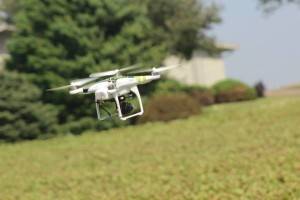Sometimes I get so confused. Consumers want us farmers to take care of our animals, yet they want us to put them outside in this idealistic pasture covered in beautiful sunshine. What they fail to realize is there are very few days of “ideal temperatures” in the Midwest plus animals on pasture have very little protection from disease and predators.
This week a friend told me how she feels technology has hindered the personal touch farmers had with consumers. She misses the coffee meetings that were held every day at the local elevator. What she needs to realize is technology allows us to move those “coffee chats” online using Facebook, Twitter and other social media platforms. Farmers and consumers alike can engage in conversations following hashtags like #agchat, #foodchat and #cgconvo.
 Millennials as a group are said to have the most buying power and influence. They also are the most technology savvy, yet they use their smartphones and tablets to post comments about how technology doesn’t have a place in raising their food. Here again, I’m getting mixed messages. Many of these same people use Wi-Fi on their phones as they grab a quick bite for lunch. Again, this sends a mixed message. Technology allows farmers to produce food more efficiently. Efficiency leads to lower costs of production, which translates into lower prices paid by consumers.
Millennials as a group are said to have the most buying power and influence. They also are the most technology savvy, yet they use their smartphones and tablets to post comments about how technology doesn’t have a place in raising their food. Here again, I’m getting mixed messages. Many of these same people use Wi-Fi on their phones as they grab a quick bite for lunch. Again, this sends a mixed message. Technology allows farmers to produce food more efficiently. Efficiency leads to lower costs of production, which translates into lower prices paid by consumers.
Whether it’s in the pocket of a millennial or in the tractor of the farmer, technology is here to stay. Technology is the best way to make farming more efficient and sustainable. The use of precision farming makes better use of inputs, but farmers aren’t yet able to maximize the technology available. In remote areas – and I’m not talking about in the mountains out west – there is very poor internet connection.
You can’t get a good connection in many farm fields and even farmhouses in our state. My farm is a prime example of the struggles rural residents face. In recent years, I’ve struggled to get reliable Internet. Dial up was first but it was too slow to do anything more than send a very short email. With a need to do more online, Janice and I subscribed to satellite Internet. This option allowed us to SLOWLY download video, but we would go over our allowed usage if we watched the video!
We pay $80 per month if we are very conservative with our usage, and going over the allowed usage is very expensive. As online communications technology has become more sophisticated, it requires more bandwidth. Our satellite Internet provider has upgraded once over the years, but is still way behind anything offered in town.
Currently, I’m using a modem with access to cell phone signals. So far, it’s more dependable and even a little faster than our satellite service. There is no way, however, I would be able to send or receive the amount of information collected by a drone.
Today’s farmers have the means to spoon-feed fertilizer and pesticides almost down to the plant as long as they have an internet connection. We can plant seeds according to soil type and switch the hybrid being planted as the planter crosses a field. Technology exists for sprayers to lower the rate of application where the crops do not need as much fertility. This type of technology can help prevent nitrates from leaching and can increase yields. Video cameras provide a live feed to mobile phones, allowing farmers to monitor livestock 24 hours a day.
The need for reliable internet for economic development, business and farming is why Iowa Gov. Terry Branstad and Lt. Gov. Kim Reynolds in 2013 unveiled the “Connect Every Iowan” initiative. Access to broadband is key to farming with drones and benefiting from evolving planter technology that allows farmers to switch hybrids on the go.Not only would farmers benefit, but so would rural business owners and healthcare providers. Broadband access is key to improving the quality of life and increasing economic development here and across the state. Why wouldn’t we want to support that?
